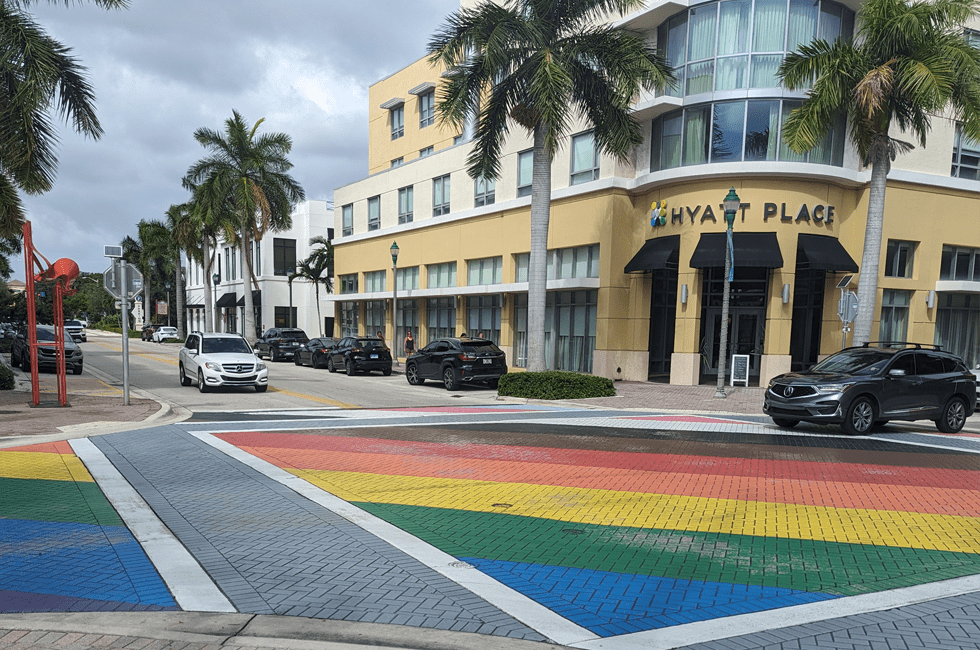
- By: David Zappitell
- Delray Beach
- Oct 23
- Comments (0)
How To Avoid A Car Accident At Florida Intersections
Navigating intersections, especially in busy cities like Delray Beach, Boynton Beach, and Boca Raton, can be a challenging experience for many drivers. Understanding the importance of the rules at a 4-way stop can be the difference between a smooth drive and a potentially dangerous car accident.
Zappitell Law Firm has been representing clients involved in accidents at 4-way stops for decades. Our experience has allowed us to provide you with some simple rules to follow when approaching any intersection.
Let’s dive deep into the intricacies of intersection etiquette and ensure that you’re equipped with the knowledge to make your drive safer.
Right-Of-Way General Rules
The rules of right-of-way are important for ensuring the safe and smooth flow of traffic. In Florida, as in most states, the rules are designed to help drivers know who should go first in different traffic scenarios.
Here’s a brief explanation of some of the key rules of right-of-way in Florida including who goes first on a 4-way stop to help you avoid a needless fender bender:
Intersections
- At an intersection with stop signs at all corners, the driver who arrives and stops first goes first. If two vehicles arrive at the same time, the vehicle on the right has the right of way.
- At an intersection with no signs or signals, which is rare, the driver on the left should yield to the driver on the right.
- Vehicles already in the intersection have the right of way over vehicles that have not yet entered.
Roundabouts
- Vehicles in the roundabout have the right of way.
- Vehicles entering the roundabout must yield to vehicles already in the roundabout.
Driveways and Alleys
- Drivers entering a roadway from a driveway, alley, parking lot, or roadside must yield to vehicles already in the roadway.
Pedestrians
- Pedestrians in a crosswalk (marked or unmarked) have the right of way. Vehicles must stop for them.
- However, pedestrians must not suddenly walk into the path of a vehicle that is so close it’s impossible for the vehicle to yield.
Emergency Vehicles
- Emergency vehicles (e.g., police cars, ambulances, fire trucks) using sirens and/or flashing lights have the right of way.
- Drivers must pull over to the closest side of the road and stop until the emergency vehicle has passed.
Buses
- In many areas, when a bus signals to pull back onto the roadway from a bus stop, drivers in the adjacent lane must yield.
Highways
- Vehicles entering a highway from an entrance ramp must yield to vehicles already on the highway.
- On multi-lane roads, the left lane is typically for faster-moving or passing traffic. If you are traveling slower than the traffic flow, keep to the right and allow others to pass.
Bicycles
- Bicyclists are treated as vehicles on the road. They have the same rights and responsibilities as motor vehicles.
- When making a turn, drivers must yield to bicyclists traveling straight through an intersection.
Recap:
- Intersections: The first to arrive goes first; if simultaneous, the rightmost vehicle goes first.
- Roundabouts: Vehicles already in the roundabout have priority.
- Driveways/Alleys: Yield to vehicles on the main road when entering from driveways or alleys.
- Pedestrians: Always have the right of way in crosswalks.
- Emergency Vehicles: Give way to them when they have sirens or flashing lights on.
- Buses: Yield to them when they’re signaling to re-enter the roadway from a stop.
- Highways: Yield to vehicles already on the highway when merging.
- Bicycles: Treated as vehicles; yield to them when they’re going straight and you’re turning.
Navigating A 4-Way Stop: Step-by-Step Instructions
When You’re The Only Car:
Driving on roads like Federal Highway in Boca Raton or Atlantic Ave. in Delray Beach can be a delight, especially when the roads are clear. But no matter where you go, a 4-way stop will come across your path. If you’re the only car at a 4-way stop:
- Approach the intersection with caution.
- Ensure a complete stop at the white line or crosswalk.
- Vigilantly check for pedestrians, bikes, and other vehicles.
- Once it’s safe, proceed with your journey.
When Multiple Vehicles Arrive At The Same Time:
This can be a bit tricky, but remember:
- The car to the right goes first.
- If just two cars are directly across from one another, the one going straight takes precedence. If turning into the lane of the car across from you, wait for the other car to pass.
If Cars Arrive At Different Times:
This is straightforward:
- The first car to make a complete stop at the intersection has the right-of-way.
- Always observe and respect the order of arrival to avoid confusion.
Recap:
- Approach intersections with caution and always stop at the designated line.
- Respect the order of arrival and always give the right-of-way to the car on the right in simultaneous situations.
Conclusion
Navigating a 4-way stop might seem confusing, but with the right knowledge, it becomes second nature. Now that you know who goes first on a 4-way stop in Florida, ensure the safety of not just yourself but also other drivers and pedestrians by adhering to the guidelines mentioned above.
And if you ever find yourself in an unfortunate situation involving a car accident in Delray Beach, Boynton Beach, Boca Raton, and the surrounding areas, remember that the Zappitell Law Firm, located in the Pineapple Grove Arts District, is here to help. We offer the perfect blend of personal attention, vast legal resources, and proven experience.
Stay safe on the roads and always respect the right-of-way! For legal representation after a car accident, click here or give us a call at 561-330-6330 for a FREE consultation.